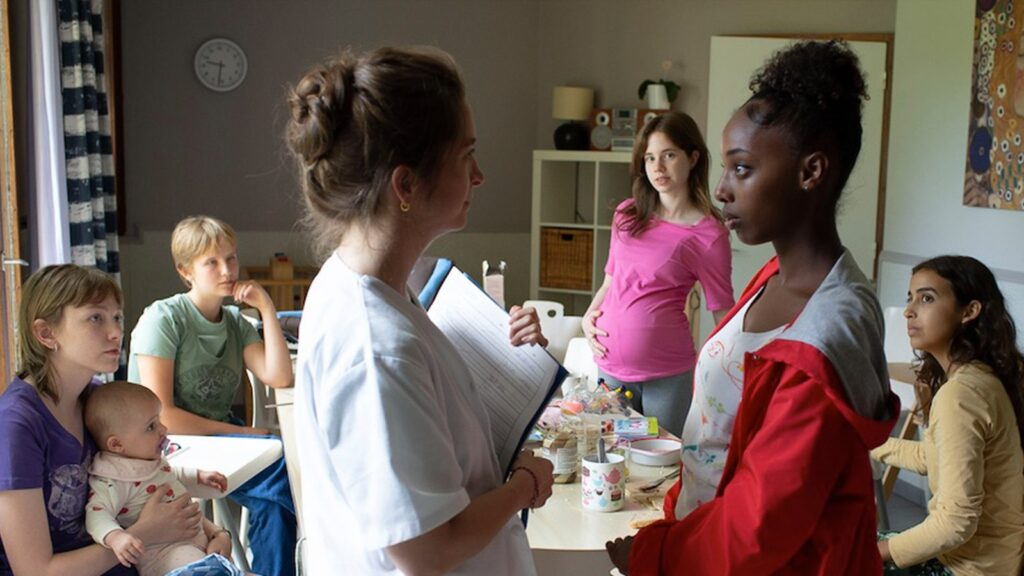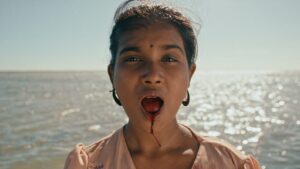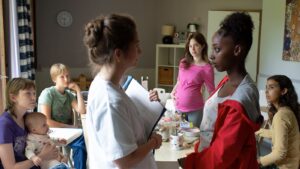Title: Young Mothers
Foreign Title: Jeunes mères
Year: 2025
Country: Belgium/France
Language: In French with English subtitles
Directors and writer: Jean-Pierre Dardenne| Luc Dardenne
The latest film from the Dardenne brothers is another powerful work of social realism, but unlike their previous films, this one carries a faint touch of hope at the end.
The story follows five teenage mothers living in a special shelter where they are trained and guided into motherhood. Their circumstances vary: some come from struggling families, others from homes that can’t or won’t support them, one of them doesn’t have a family at all.
Shifting from one story to another, the film focuses both on the individual mothers and on the collective life within the shelter, the friendships formed, the daily routines, the shared meals the young women prepare, and the camaraderie and mutual support that develop as they slowly, and not always successfully, learn what it means to be a parent and a functioning grownup in society. From renting a flat to studying and finding a job all the way of changing priorities in life.
Being a mother is hard. Being a mother for the first time at fifteen, without family support and burdened by issues like addiction, low self-esteem, or neglect, seems almost destined for failure. The journey is fragile and intimate, both for the young mothers, the supporting staff, and for us as viewers. From the first frame, we cling to hope that they won’t stumble, that they’ll resist drugs, avoid abusive partners, and rise above the mistakes of their parents. Like life and parenthood itself, the film is a Sisyphean journey. By the end, though not much “happens,” you find yourself emotionally drained. The film concludes, but it doesn’t end, and you keep hoping their fragile progress continues beyond the screen.




